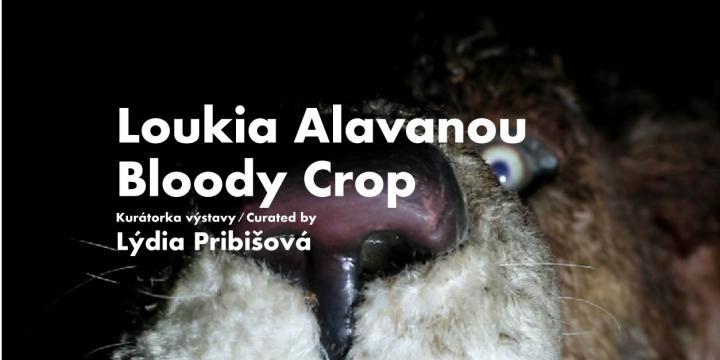Composed of collaged fragments from cinematic sources interweaved with her own film sequences, Loukia Alavanou’s films and installations deal with the female voice in film, or even the absence thereof. Growing up in a Communist context right after the fall of the US-backed Greek dictatorship in the 1970s, a transitional period in a schizophrenic country emerging from the centuries of colonial rule, the artist embraces montage as a vehicle of propaganda parody, exaggerating contradictions and manipulating the ‘real’. While the emphasis of her films lays on the cut and the sound dictates her playfully manipulative narratives, the found footage assembled comes from many different sources: From abstract images in the early Walt Disney cartoons or Ingmar Bergman’s iconography, folly sounds from post-war British Technicolor films and narrations from the USA propaganda children’s documentaries. These are collaged with self-shot images of ruins, gold-mines, post-capitalist wastelands and the dark rooms of photography and dioramas. In Hit Gallery she is presenting three projects:
Kiss Forever (2011) is an animated assemblage composed of fragmented sounds and images that never seem to be evenly superimposed, as if the two can never manage to form a marriage. The work is based on a found wedding photograph of a Muslim couple in London. The eastern and western elements, also obvious from the outfits of the bridegroom in the found image, are composed into a violent video collage: Cut-outs from Hollywood horror films, early Disney shorts and Greek and Turkish melodrama from the 1950’s are some of the components of this haunting choreography that challenges stereotypical gender roles and the fantasy of the ideal heteronormative union.
Bananaland (2017) is a film shot in Ecuador, the first country to recognize the rights of nature in its constitution and where the toxic waste management company Polyeco, commissioner of the film, has undertaken to remove the toxic pesticides they formerly used in agriculture. The film emphasizes the impact of the pesticides on the life of the indigenous inhabitants of the small agricultural banana village of Los Angeles, in South Ecuador. The film is composed as a collage, combining self-shot footage of the farmers with images from the historical propaganda dioramas from a museum in Guayaquil as well as historical American children’s colonialist cartoons and propaganda documentaries, such as 1950’s Journey to Bananaland. The narrator’s voice, often playfully censored in the montage, deals with the act of cutting. The cut is even mentioned in the context of processing fruits, as if dictated by someone in authority to their slave. The residents of the Ecuadorian village of Los Ángeles apparently appear illuminated from bellow, from a frog’s perspective, reminding the imposing heroic figures of Socialist Realism that stand in the nearby village of Milagro.
The protagonist of the Ducktator video (2012) is the artist’s own grandmother, an elderly lady suffering from Alzheimer’s disease, who was asked to narrate in front of the camera in a TV broadcasting studio while recalling her life under the junta. The artist playfully censors the woman’s voice and image, substituting it with abstract images from the Soviet, Nazi and American propaganda cartoons from the 1930’s and 1940’s, as well as audio extracts from the newsreels broadcasted in the national television during the 1970’s dictatorship in Greece. The latter deal with a variety of hot topics of those days, from an earthquake in Athens, to the Greek president’s Christmas dinner with his acquaintances, a road accident, the denuclearization of the Balkans or the Greek-Soviet economic cooperation of the 1970’s. Towards the end of the video the old lady’s voice is finally heard singing a very personal song that sounds like a prayer, reminding us that there is only a thin line between democracy and totalitarianism.
The work Ducktator was commissioned and produced by Onassis Culture.
Supported using public funding from the Slovak Arts Council and Ars Bratislavensis.



